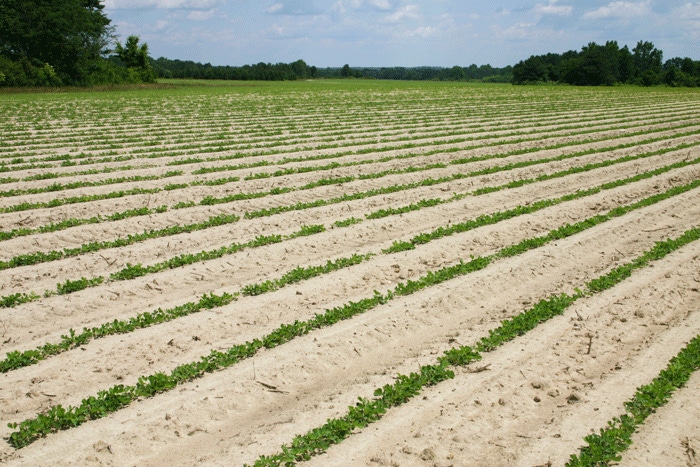May 14, 2013

We are slowly beginning to warm up and growers are starting to prepare land for the 2013 growing season.
I mentioned this in the previous newsletter a few weeks ago.
The problem is we are still having unseasonably cool nights. Peanuts planted in the last two weeks are taking longer to germinate and grow as a result of these conditions.
The good news is nighttime temperatures are expected to move into the mid-60s, with daytime temperatures expected to be in the mid- to upper-80s for the next 10 days. Hopefully, the cool nights are over and peanuts will begin to grow.
Early season disease problems and cool wet weather
I hope you do not experience a loss in stand as a result of seedling disease as a result of the cool wet weather. Peanuts are a robust growing plant, but conditions like we are experiencing can cause a peanut to be more susceptible to diseases like Rhizoctonia and Pythium.
Please let me know if you are seeing stand issues or if you need my assistance in diagnosing any problems you are experiencing.
Things to consider before planting:
• Am I planting high quality seed? What is the percent germination?
• Do I need Proline in-furrow at planting? I would say yes if you have a history of CBR. CBR tends to be much more of a problem in cool and wet weather.
• Proline in-furrow will not control white mold.
• Double-check your insecticide and inoculant tubes to make sure they are flowing properly.
A new herbicide “ET” registered for use in peanuts in South Carolina
Since I have not worked with “ET” in South Carolina, I wanted to bring you the latest research information available from Eric Prostko, at the University of Georgia. This is not a formal recommendation from me. I just wanted to provide information since “ET” is being sold within the state. I hope to have more information later.
ET 0.208EC (pyraflufen-ethyl) recently received a registration for use in peanuts. ET can now be applied preplant (0.5-2.0 oz/A), after planting, but before emergence (1-2 oz/A), and postemergence (1-2 oz/A). You can review Nichino’s ET peanut propaganda at the following web-location:
http://www.nichino.net/wp-content/uploads/2013/03/ET-Peanuts.pdf
What does our UGA data say? Check out Figures 1-3. ET has resulted in significant weed control improvements in a few instances, but not all the time (3/15 comparisons or 20 percent) Generally, these improvements occurred when the main tank-mix partner was applied to a less susceptible species/biotype. Is that enough to justify ET’s use on every acre? You and your growers can decide that for yourselves. At a use rate of 1-2 oz/A, ET will cost $2.45-$4.90/A.
A few other things to consider about ET: 1.) ET has minimal/no activity on annual grasses, sicklepod, and tropical spiderwort; 2.) ET is yet another PPO herbicide; and 3.) ET will cause some short-term foliar injury (Figure 4).
You might also like
Supreme Court rules in Monsanto's favor
Cotton replant costs tallied
Tobacco may find additional market as biofuels crop
Study shows biodiesel has increased price of soybeans by $0.74 per bushel
Memorial Day weekend to play key role in beef demand, prices
You May Also Like




